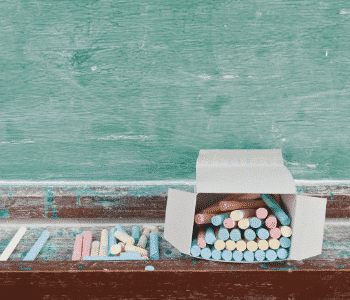3 Things You Can’t Teach About Plagiarism

When it comes to plagiarism and citation, there is a great deal we can and should teach students.
We can teach students about how and when they should cite, what the citation standards are and how to use the cleanroom writing method to encourage proper paraphrasing and citation. We can teach the school’s honor code, the consequences of plagiarism and we can teach students how to spot plagiarism in works that they read.
There is much more that teachers can and should do to teach citation. With proper education and support, we can work to eliminate the very real hazard of students accidentally plagiarizing due to a lack of understanding or a lack of necessary skills.
However, not everything about plagiarism can be taught. In the end, it’s the student that must do the work and, no matter how well they understand plagiarism and citation, they can still run afoul of plagiarism standards.
To that end, here are three things that even the best teachers and the best policies can never teach students about plagiarism.
1: Ethics

This one is straightforward. Even if you eliminate every student who plagiarized on accident or due to a lack of understanding about the rules, you would still have students that plagiarized out of malice and an intention to cheat on the assignment.
As we have discussed before, plagiarism is a deed for people who put outcomes ahead of the process, if a student values completing an assignment more than they value what they gain doing the assignment, they may consider plagiarism. This is especially true if they don’t consider plagiarism ethically wrong and view it simply as a strange quirk of academia.
As we’ve seen in studies, there is a percentage of students that simply don’t believe any form of academic cheating is unethical, including plagiarism. While we can explain over and over why plagiarism is wrong, the ethics are ultimately up to the student.
For those that simply see no ethical issue with plagiarism, the most we can hope to do is create engaging assignments that they want to complete and, as unpleasant as it is, use the fear of punishment. It’s for these students that strict penalties and plagiarism detection tools were created.
2: Time Management

Technically, instructors can teach time management including tricks for breaking apart assignments and best practices for completing a large assignment on time. However, there’s a significant difference between teaching the practical steps needed for good time management and enforcing the personality traits that lead to those steps being executed.
Ultimately, whether students follow through on best time management practices is largely up to them. Poor time management might not even be the student’s fault as it could be a sign of stress, an attention disorder or mental health issues.
However, some students are simply procrastinators. Even without any underlying issues and even with the best tools at their disposal, they will put assignments off to the last minute and are prone to panic and taking shortcuts to save time.
For these students, the best we can do is create assignments that have multiple deliverables, each that have their own deadlines. By breaking up assignments, teachers can reduce the crunch and panic at the end of a major project. However, that runs the risk of turning one major crunch into several smaller ones.
3: Handling Peer Pressure

For all the press essay mills have gotten, most contract cheating (and cheating in general) is peer-to-peer. When in need for an assignment, students will likely turn to their classmates long before they turn to an online essay mill.
One would think that non-cheating students would simply refuse to help. However, peer pressure can be a powerful tool and students, in particular younger ones, are not always equipped emotionally to handle it.
To be clear, peer pressure is a part of life for everyone, teens and adults. Peer pressure can also have both positive and negative impacts. However, teens face an inordinate amount of it and often haven’t learned tactics to deal with it and avoid negative consequences.
While we can teach students techniques to deal with peer pressure and offer advice for how to handle it, peer pressure is a powerful and compelling force. Even the strongest students can fall victim to it. The best that we can do is create assignments that students can’t easily help one another on and try to identify students that may become targets for peer pressure.
We can’t teach someone definitively how to avoid or handle peer pressure, but we can support its victims and reduce the temptation for others to exploit it.
Bottom Line
In the end, no matter how much support you give, no matter how much information you pass along and no matter how well you explain these issues, it’s up to the students.
When those students are at home alone working on their assignments, they have to make the ultimate decision of whether or not to cheat or plagiarize. They and they alone have that power.
While there are many times an incident of plagiarism is caused by schools not giving students the needed tools and information, there will always be students that, in spite of being given every opportunity to avoid plagiarism, will choose to do so.
Yes, there is more that schools can and should do to educate and help students avoid plagiarism issues, but there are also cases where it is simply not the school’s fault. Ultimately, education only goes so far, especially with those that don’t wish to receive it.
For teachers, the challenge is separating these two cases: Cases where the school failed the student and cases where the student failed the school. Once you do that, you can help the students that need help while still taking appropriate action against the students that simply cheated.
Want to Reuse or Republish this Content?
If you want to feature this article in your site, classroom or elsewhere, just let us know! We usually grant permission within 24 hours.
